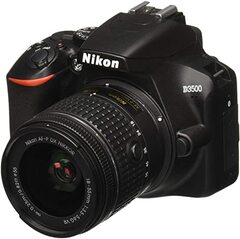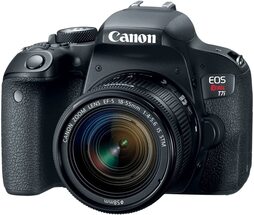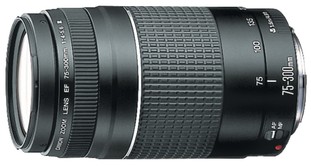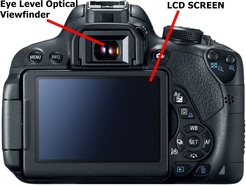Digital SLR Camera Features
 Nikon D3500 Digital SLR Camera
Nikon D3500 Digital SLR Camera
The Digital SLR camera is the most versatile of the digital cameras. It can be used as a fully automatic camera, a full manual control camera, or it can be used in one of its semi-automatic modes. Digital SLR cameras are also called DSLR or SLR cameras. The abbreviation stands for Digital Single Lens Reflex. We will cover some of the main features found in Digital SLR cameras in this tutorial.
The Digital Single Lens Reflex camera is the camera of choice for the more serious photographers as well as for professional photographers. That is because the quality of the images produced by these cameras is much better than those produced by basic compact cameras.
DSLR Cameras are popular with camera enthusiasts because they allow you to control all the exposure settings as well as change the lens whenever necessary. The versatility of Digital Slr cameras equals more control, and more control can assist in a photographers ability to be creative.
Digital SLR cameras like the entry level Nikon D3500 or the higher priced Canon EOS 80D are larger and bulkier than a compact camera. The larger size is mostly due to the mirrors and prism system used in the Digital SLR optical viewfinder system.
The following are some of the Digital SLR camera features that set it apart from compact digital cameras.
Larger Image Sensor Size/Better Image Quality: Digital SLR cameras have larger image sensors than those found in compact cameras. The larger size image sensor in a Digital SLR camera will produce a better quality image than the smaller image sensors found in compact cameras. Check the tutorial, Image Sensors to see a comparison of the different sizes of digital camera sensors.
The image sensors in digital cameras capture the light coming through the camera lens when a picture is taken. The pixels in a Digital SLR camera image sensor are larger than the pixels found in a compact digital cameras' image sensor. The larger pixels are more sensitive to light and can record bright or shadow areas in a scene more accurately. (better dynamic range)
A Digital Slr camera can also take better pictures in low light and there will be less "noise" in the image compared to an image produced with a smaller sensor. Digital camera noise is a reference to tiny specks in an image that can be seen when very high ISO settings are used in low light situations. Check the What is ISO tutorial for an example of digital camera noise.
Pictures taken with DSLR cameras and their larger image sensors can also be printed to larger sizes with less loss of image quality than those taken with a compact camera
The Digital Single Lens Reflex camera is the camera of choice for the more serious photographers as well as for professional photographers. That is because the quality of the images produced by these cameras is much better than those produced by basic compact cameras.
DSLR Cameras are popular with camera enthusiasts because they allow you to control all the exposure settings as well as change the lens whenever necessary. The versatility of Digital Slr cameras equals more control, and more control can assist in a photographers ability to be creative.
Digital SLR cameras like the entry level Nikon D3500 or the higher priced Canon EOS 80D are larger and bulkier than a compact camera. The larger size is mostly due to the mirrors and prism system used in the Digital SLR optical viewfinder system.
The following are some of the Digital SLR camera features that set it apart from compact digital cameras.
Larger Image Sensor Size/Better Image Quality: Digital SLR cameras have larger image sensors than those found in compact cameras. The larger size image sensor in a Digital SLR camera will produce a better quality image than the smaller image sensors found in compact cameras. Check the tutorial, Image Sensors to see a comparison of the different sizes of digital camera sensors.
The image sensors in digital cameras capture the light coming through the camera lens when a picture is taken. The pixels in a Digital SLR camera image sensor are larger than the pixels found in a compact digital cameras' image sensor. The larger pixels are more sensitive to light and can record bright or shadow areas in a scene more accurately. (better dynamic range)
A Digital Slr camera can also take better pictures in low light and there will be less "noise" in the image compared to an image produced with a smaller sensor. Digital camera noise is a reference to tiny specks in an image that can be seen when very high ISO settings are used in low light situations. Check the What is ISO tutorial for an example of digital camera noise.
Pictures taken with DSLR cameras and their larger image sensors can also be printed to larger sizes with less loss of image quality than those taken with a compact camera
 Canon T7i Digital SLR Camera
Canon T7i Digital SLR Camera
Interchangeable Lenses: Another major feature that sets a DSLR camera apart from a compact camera is the fact that the lens on a DSLR camera can be changed to better fit the picture taking situation. The lens on a typical compact camera cannot be changed or removed.(However, in recent years, Compact System Cameras with interchangeable lenses have entered the market.)
A Digital SLR camera user might use a fixed focal length wide angle lens while taking landscape pictures, and then switch to a fixed focal length telephoto lens to get a closer shot of a bird in a tree. Or maybe the Digital SLR camera user might use a wide angle to telephoto zoom lens to take the pictures in both situations.
A Digital SLR camera user might use a fixed focal length wide angle lens while taking landscape pictures, and then switch to a fixed focal length telephoto lens to get a closer shot of a bird in a tree. Or maybe the Digital SLR camera user might use a wide angle to telephoto zoom lens to take the pictures in both situations.
 Canon 75-300mm Zoom Lens
Canon 75-300mm Zoom Lens
The bottom line is that with a Digital SLR camera like the Canon EOS Rebel T7i, you will be able to choose the best lens to help you create the image that you have in mind. Most Digital SLR camera lenses are sharper and clearer than the lenses found on basic compact cameras, especially the fixed focal length Digital SLR camera lenses.
Also, many Digital SLR camera lenses have wider lens aperture openings than those available on compact cameras. Lenses with wider aperture openings make it possible to take pictures in many low light situations without using a flash. Please check the tutorials on Camera Lens Types or the Camera Lens Aperture for more on camera lenses and camera lens apertures.
Listed next are more Digital SLR camera features.
Automatic Mode: A Digital Slr camera that is set to the Automatic mode can be used as a Point and Shoot camera if you choose not to bother with any of the exposure controls.
Full Manual Mode: When using the manual mode, you can control all of the cameras settings. To get the full benefit of using a Digital SLR camera in the manual mode, you will need to know a little about the Basics of Camera Exposure.
That means knowing how the camera lens aperture, shutter speed, and ISO settings are related when it comes to obtaining a picture that is properly exposed. It is not difficult to learn about the basics of exposure, and once you know it, you will have more control over the look of your images. It will help you understand how to create blurred or sharp backgrounds and minimize or create blur in pictures with movement.
Program Mode: When you use the program mode, the camera's aperture setting and shutter speed is set for you. It is pretty similar to using the Automatic mode since you don't have to choose a lens aperture setting or a shutter speed in this mode. However, when you use the program mode, you are able to control other settings like Exposure Compensation, White Balance, Flash, and ISO. This is a good mode to help wean yourself away from the full Automatic Mode and to begin to learn how to use some of the camera's manual settings.
Also, many Digital SLR camera lenses have wider lens aperture openings than those available on compact cameras. Lenses with wider aperture openings make it possible to take pictures in many low light situations without using a flash. Please check the tutorials on Camera Lens Types or the Camera Lens Aperture for more on camera lenses and camera lens apertures.
Listed next are more Digital SLR camera features.
Automatic Mode: A Digital Slr camera that is set to the Automatic mode can be used as a Point and Shoot camera if you choose not to bother with any of the exposure controls.
Full Manual Mode: When using the manual mode, you can control all of the cameras settings. To get the full benefit of using a Digital SLR camera in the manual mode, you will need to know a little about the Basics of Camera Exposure.
That means knowing how the camera lens aperture, shutter speed, and ISO settings are related when it comes to obtaining a picture that is properly exposed. It is not difficult to learn about the basics of exposure, and once you know it, you will have more control over the look of your images. It will help you understand how to create blurred or sharp backgrounds and minimize or create blur in pictures with movement.
Program Mode: When you use the program mode, the camera's aperture setting and shutter speed is set for you. It is pretty similar to using the Automatic mode since you don't have to choose a lens aperture setting or a shutter speed in this mode. However, when you use the program mode, you are able to control other settings like Exposure Compensation, White Balance, Flash, and ISO. This is a good mode to help wean yourself away from the full Automatic Mode and to begin to learn how to use some of the camera's manual settings.

Aperture Priority Mode: The aperture priority mode lets you control the camera lens aperture settings. The lens aperture settings determine the amount of light entering the camera during an exposure. Once you choose the camera lens aperture setting in this mode, the camera will automatically set the shutter speed for you.
This mode also helps you to control the Depth of Field in a picture. Controlling the Depth of Field also allows you to determine how much of the image, including backgrounds and foregrounds, will be in or out of focus.
Shutter Speed Priority: Using the shutter speed priority mode allows you to choose the shutter speed you want to use and the camera will set the lens aperture to obtain correct exposure. Using faster shutter speeds will allow you to photograph moving subjects without getting a blurred picture. You also have the option of using a slower shutter speed to allow more light to reach the image sensor when taking pictures in low light.
Optical Eye Level Viewfinder: In addition to an LCD viewing screen, Digital Slr cameras have eye level optical viewfinders which allow you to view the scene or subject before you take the picture. It is easier to brace yourself and hold the camera steady when using the optical viewfinder instead of holding the camera at arms length like so many people do when using their camera's LCD screen.
Hotshoe: Most Digital SLR cameras have a hotshoe attachment which gives the photographer the option to use external flash units instead of the built in camera flash. This is important when a photographer wants a more powerful flash or wants to have more control over the direction of the light.
To summarize, Digital Single Lens Reflex cameras are the most versatile and best quality cameras for serious amateurs as well as professionals. However, they are not the best choice for everyone.
Although the larger image sensor and better lens quality of a Digital SLR camera will produce sharper and clearer images than a compact camera, it might not be obvious or meaningful to a very casual photographer. A person who will take pictures every now and then might be better off with a Basic Compact camera.
Someone who wants a little more control over settings when taking a picture and can't afford a DSLR, might want to consider a compact Bridge/Advanced Camera. Bridge cameras cameras give the photographer full control over the lens aperture settings and shutter speeds just like a Digital Slr camera. However, the lens on a bridge camera is fixed and cannot be changed.
If the features of a DSLR camera (including the ability to change lenses) are appealing to you but you prefer those features in a smaller camera, a Compact System camera might be the best choice for you.
This mode also helps you to control the Depth of Field in a picture. Controlling the Depth of Field also allows you to determine how much of the image, including backgrounds and foregrounds, will be in or out of focus.
Shutter Speed Priority: Using the shutter speed priority mode allows you to choose the shutter speed you want to use and the camera will set the lens aperture to obtain correct exposure. Using faster shutter speeds will allow you to photograph moving subjects without getting a blurred picture. You also have the option of using a slower shutter speed to allow more light to reach the image sensor when taking pictures in low light.
Optical Eye Level Viewfinder: In addition to an LCD viewing screen, Digital Slr cameras have eye level optical viewfinders which allow you to view the scene or subject before you take the picture. It is easier to brace yourself and hold the camera steady when using the optical viewfinder instead of holding the camera at arms length like so many people do when using their camera's LCD screen.
Hotshoe: Most Digital SLR cameras have a hotshoe attachment which gives the photographer the option to use external flash units instead of the built in camera flash. This is important when a photographer wants a more powerful flash or wants to have more control over the direction of the light.
To summarize, Digital Single Lens Reflex cameras are the most versatile and best quality cameras for serious amateurs as well as professionals. However, they are not the best choice for everyone.
Although the larger image sensor and better lens quality of a Digital SLR camera will produce sharper and clearer images than a compact camera, it might not be obvious or meaningful to a very casual photographer. A person who will take pictures every now and then might be better off with a Basic Compact camera.
Someone who wants a little more control over settings when taking a picture and can't afford a DSLR, might want to consider a compact Bridge/Advanced Camera. Bridge cameras cameras give the photographer full control over the lens aperture settings and shutter speeds just like a Digital Slr camera. However, the lens on a bridge camera is fixed and cannot be changed.
If the features of a DSLR camera (including the ability to change lenses) are appealing to you but you prefer those features in a smaller camera, a Compact System camera might be the best choice for you.